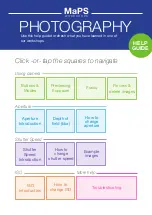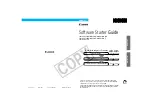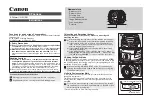
Controlling image capture
PIKE Technical Manual
V5.0.0
195
The advanced register allows start of the integration to be delayed by max.
2
21
µs, which is max. 2.1 s after a trigger edge was detected.
Debounce
Only for input ports:
There is an adjustable debounce time for trigger: separate for each input pin.
The debounce time is a waiting period where no new trigger is allowed. This
helps you to set exact one trigger.
The debounce feature is applied in cases of bad signals. The aim is to let the
trigger run, when the signal is debounced.
To set this feature in an advanced register: see Chapter
To set this feature in SmartView:
Trig/IO
tab,
Input pins
table,
Debounce
column.
Low pass
Debounce acts like a low-pass filter with debounce time acting as resistance-
capacitance element. That means: with increasing debounce time trigger will
release later.
Example
Debounce time set to 20 µs.
A switch debounces with 5 µs high pulse and 1 µs low pulse. During high
pulse an internal counter adds one cycle, during low pulse the counter sub-
tracts one cycle. Therefore high pulses at input pin have to be
20 µs.
Internal counter sees: 5 µs - 1 µs = 4 µs
Number of periods during debounce time: 20 µs / 4 µs = 5
That means 5 periods x 6 µs = 30 µs
Note
•
Switching trigger delay to ON also switches external
Trigger_Mode_0 to ON.
•
This feature works with external Trigger_Mode_0 only.
Figure 105: Example of debounce time for trigger
Trigger
signal
Debounce time















































